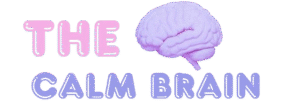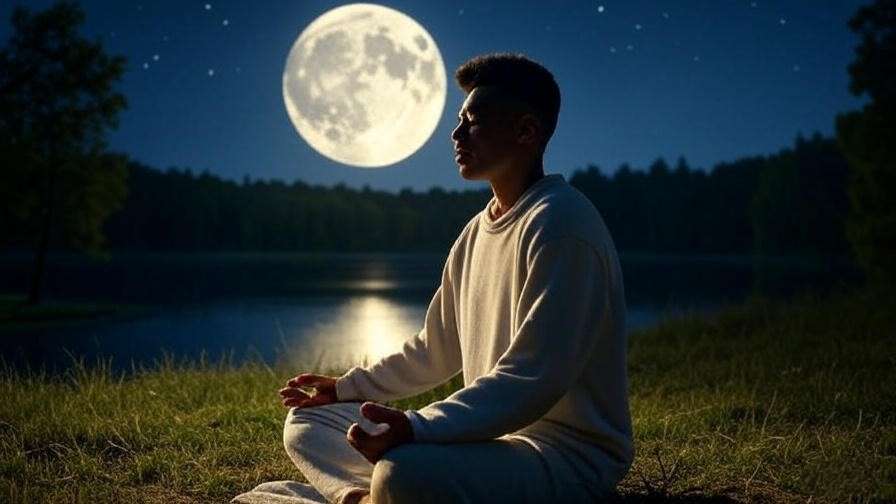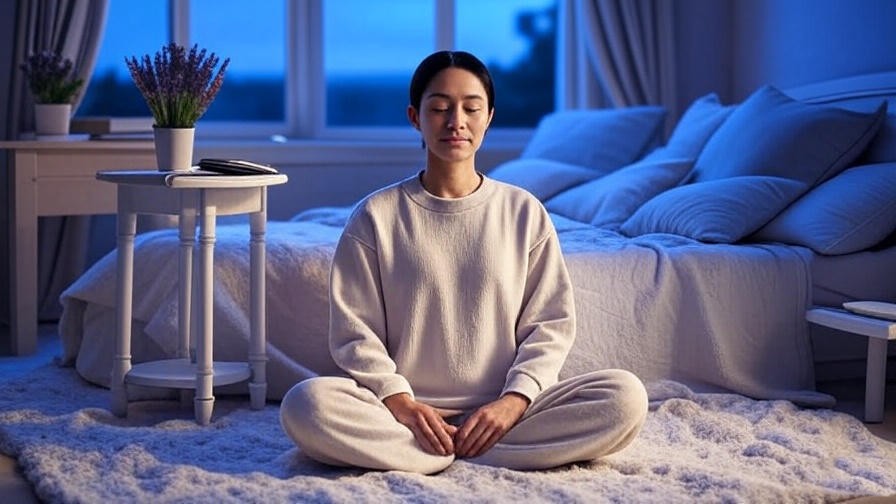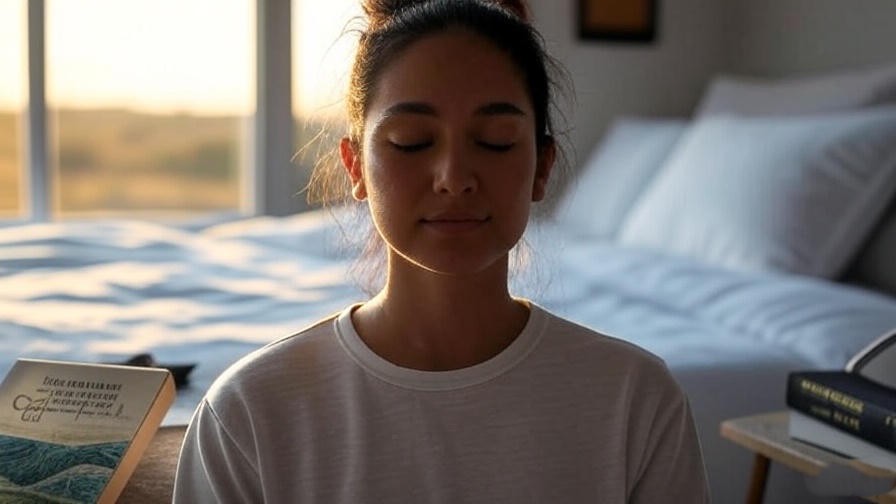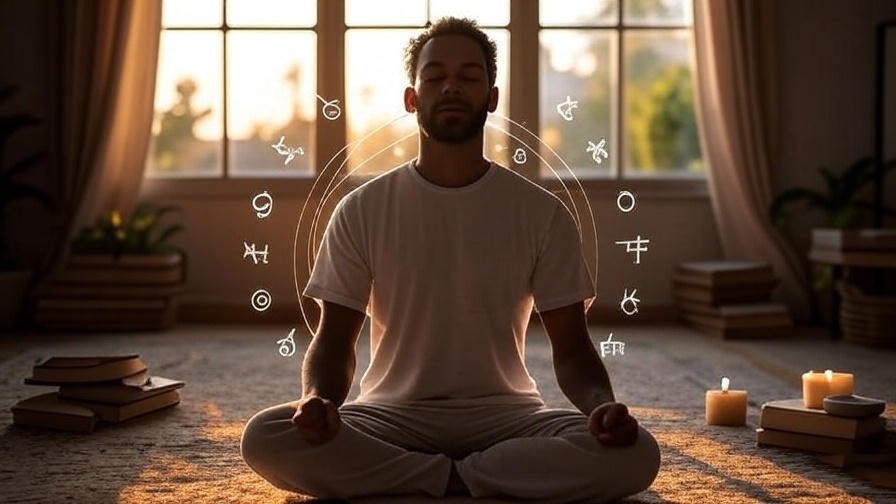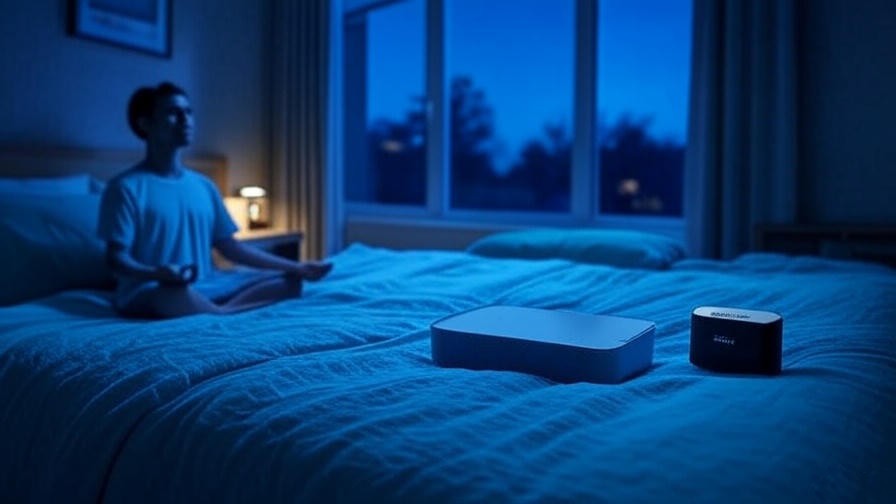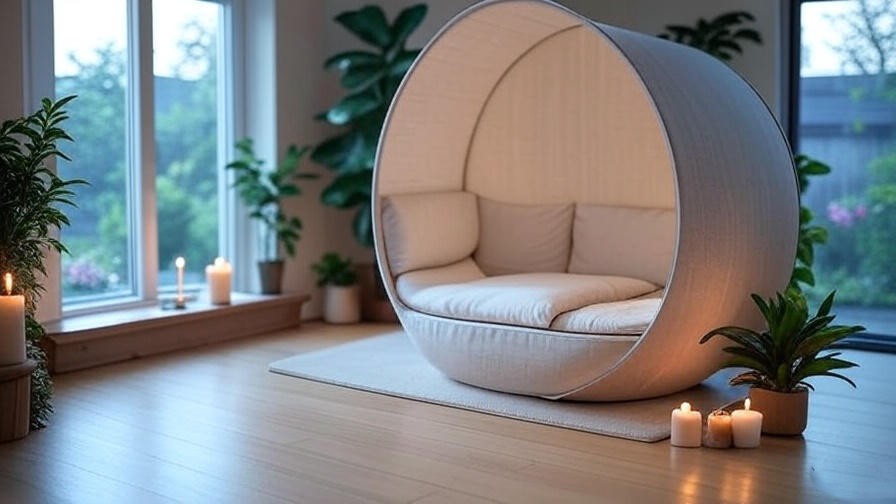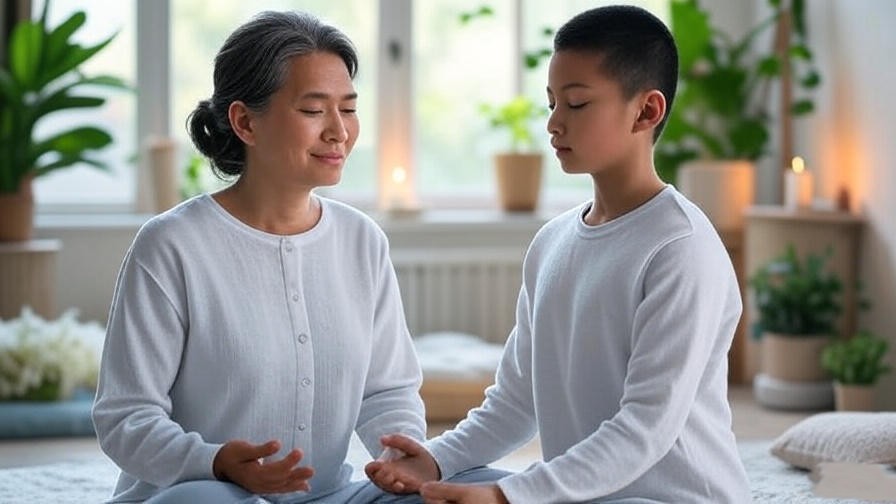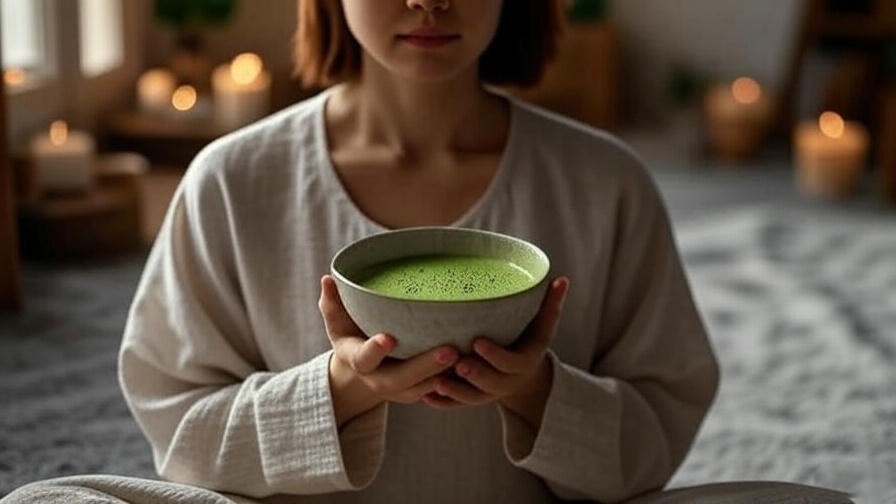Have you ever gazed at a glowing full moon and felt a stir of energy, a pull toward something deeper? This celestial event, revered across cultures, holds a unique power to influence our minds and bodies. Combining the full moon and meditation creates a potent practice that can transform your sleep quality and cultivate profound inner peace. In today’s fast-paced world, where stress and sleepless nights are all too common, harnessing the lunar cycle through mindfulness offers a holistic solution. This article explores the science, spirituality, and step-by-step strategies to make full moon meditation a game-changer for your well-being. Ready to unlock restful sleep and emotional clarity? Let’s dive in.
The Science and Spirituality of the Full Moon
How the Full Moon Affects the Body and Mind
The full moon has long been associated with changes in human behavior and physiology. Research from the University of Basel (2013) found that sleep patterns can shift during lunar cycles, with participants taking longer to fall asleep and experiencing reduced deep sleep around a full moon. This phenomenon, often called the “lunar effect,” suggests that the moon’s gravitational pull or increased light may subtly disrupt our circadian rhythms. Beyond sleep, many report heightened emotions or restlessness, a pattern noted in psychological studies exploring lunar phases and mood swings.
These effects aren’t just anecdotal. A 2018 study in Scientific Reports observed increased melatonin suppression during full moons, potentially explaining why some feel more alert at night. Understanding these biological shifts can help us tailor meditation practices to counterbalance restlessness and promote relaxation.
The Spiritual Significance of the Full Moon
Across cultures, the full moon is a symbol of completion, illumination, and renewal. In Buddhism, full moon days are sacred, often marked by meditation and reflection, as seen in the Uposatha observance. Hindu traditions celebrate festivals like Guru Purnima under the full moon, emphasizing spiritual growth. Indigenous cultures, such as the Lakota, view the full moon as a time to connect with nature’s cycles, fostering gratitude and release.
This spiritual resonance makes the full moon an ideal time for meditation. As Dr. Deepak Chopra, a renowned mindfulness expert, notes, “The full moon amplifies our inner light, making it a powerful moment for self-awareness and transformation.” By aligning meditation with this phase, we tap into a universal rhythm that enhances clarity and emotional release.
Why Combine Full Moon and Meditation?
Amplifying Meditation’s Benefits
The full moon’s energy acts like a natural amplifier for meditation. Its bright light and symbolic power create a unique window for deepening focus and emotional insight. Meditation, already proven to reduce stress and enhance mental clarity, becomes even more potent when paired with lunar energy. A 2020 study in Frontiers in Psychology found that mindfulness meditation improves emotional regulation, and practicing during the full moon can intensify this effect by aligning with heightened emotional awareness.
For those seeking inner peace, the full moon offers a chance to release negativity and set intentions. This synergy makes it easier to enter a meditative state, even for beginners, as the moon’s presence feels like a guiding force.
Addressing Common Problems
Full moon meditation directly addresses common issues like insomnia, anxiety, and a sense of disconnection. The National Sleep Foundation reports that mindfulness practices can reduce sleep latency by up to 20%, helping you fall asleep faster. By meditating during the full moon, you can counteract its potential to disrupt sleep, turning restlessness into calm. For those feeling overwhelmed, this practice offers a structured way to process emotions, fostering a sense of balance and purpose.
Tip: To maximize benefits, meditate 1-2 hours before bedtime to align with your body’s natural wind-down phase.
The Benefits of Full Moon Meditation for Sleep and Inner Peace
Improved Sleep Quality
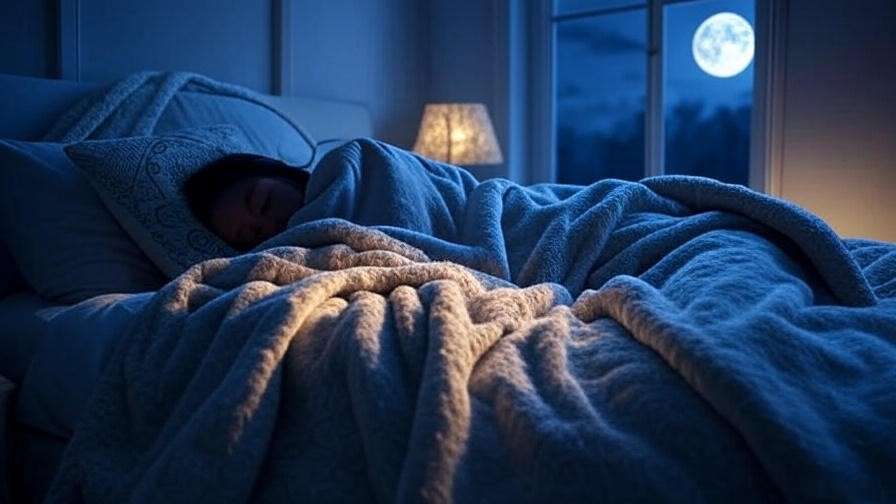
Meditation is a proven tool for better sleep, and the full moon adds a unique dimension. By calming the nervous system, meditation reduces cortisol levels, the stress hormone that keeps us awake. A 2015 study from Harvard Medical School found that mindfulness meditation increased melatonin production, essential for regulating sleep cycles. During a full moon, when melatonin may be suppressed, this practice becomes even more critical.
Full moon meditation also promotes relaxation by engaging the parasympathetic nervous system. Techniques like guided visualization—imagining moonlight washing away tension—can prepare the body for deeper, more restorative sleep.
Emotional Balance and Stress Reduction
The full moon often heightens emotions, which can feel overwhelming. Meditation provides a safe space to process these feelings, fostering emotional balance. A 2017 meta-analysis in JAMA Internal Medicine showed that mindfulness-based stress reduction (MBSR) significantly lowers anxiety and depression symptoms. By focusing on the present moment during a full moon, you can release pent-up stress and cultivate calm.
As meditation teacher Sarah Thompson explains, “The full moon is a mirror for our emotions. Meditating under its light helps us see clearly and let go of what no longer serves us.” This practice empowers you to navigate emotional peaks with grace.
Enhanced Spiritual Connection
For those seeking deeper meaning, full moon meditation strengthens your connection to yourself and the universe. The moon’s cyclical nature mirrors life’s rhythms, offering a chance to reflect on personal growth. Practitioners often report feeling more grounded and aligned after meditating under the full moon, as it fosters a sense of unity with nature.
Case Study: Lisa, a 34-year-old yoga instructor, began full moon meditation to cope with work-related stress. After three months, she reported not only better sleep but also a renewed sense of purpose, describing the practice as “a monthly reset for my soul.”
How to Practice Full Moon Meditation: A Step-by-Step Guide

Preparing for Your Full Moon Meditation
To make the most of your practice, choose a serene setting where you feel connected to the moon’s energy. Outdoors under moonlight is ideal, but a quiet indoor space near a window works too. Check a lunar calendar (available on sites like timeanddate.com) to confirm the full moon’s date and peak time, typically at night.
Gather simple tools: a comfortable cushion or chair, a candle for ambiance, or a journal for post-meditation reflection. Optional items like crystals (e.g., moonstone) or essential oils (e.g., lavender) can enhance the experience but aren’t necessary.
Tip: Set up 10-15 minutes before starting to create a calm, intentional atmosphere.
A Simple Full Moon Meditation Routine
Here’s a beginner-friendly, 10-15 minute meditation script tailored to the full moon:
- Grounding with Breathwork: Sit comfortably, close your eyes, and take 5 deep breaths. Inhale for 4 counts, hold for 4, and exhale for 6. Feel your body relax with each breath.
- Setting Intentions: Silently ask, “What do I need to release?” or “What do I want to invite into my life?” Let the full moon’s energy guide your thoughts.
- Visualizing Moonlight: Imagine a soft, silver light from the moon enveloping you. Picture it washing away stress, doubt, or negativity, leaving you calm and clear.
- Closing with Gratitude: Reflect on one thing you’re grateful for. Open your eyes and blow out any candles, feeling renewed.
Advanced Variation: Incorporate a mantra like “I release what no longer serves me” to deepen focus.
Integrating Journaling and Rituals

Journaling enhances full moon meditation by helping you process insights. Try these prompts:
- What emotions or patterns do I want to release this month?
- What intentions will guide me until the next full moon?
You can also light a candle to symbolize letting go or use lavender essential oil for relaxation. These rituals make the practice feel sacred and intentional.
Example: After a full moon meditation, Maria journaled: “I felt heavy with work stress. Visualizing the moonlight helped me let go of self-doubt. My intention is to prioritize rest this month.” This clarity improved her sleep and focus.
Common Mistakes to Avoid During Full Moon Meditation
- Mistake 1: Ignoring Your Body’s Rhythm
Meditating when overtired can lead to frustration. Solution: Practice earlier in the evening, ideally 1-2 hours before bed. - Mistake 2: Overcomplicating the Practice
Using too many tools (e.g., crystals, apps, music) can distract from mindfulness. Solution: Start with just breathwork and visualization. - Mistake 3: Skipping Reflection
Without journaling or reflection, insights may fade. Solution: Spend 5 minutes post-meditation noting thoughts or feelings.
Tip: Keep your first few sessions simple to build confidence and consistency.
Maximizing the Long-Term Benefits
Creating a Monthly Full Moon Meditation Practice
To fully harness the transformative power of full moon meditation, make it a monthly ritual. The lunar cycle, occurring approximately every 29.5 days, provides a natural rhythm for self-reflection and renewal. By meditating during each full moon, you create a consistent practice that builds emotional resilience and improves sleep over time. A 2021 study in The Journal of Clinical Sleep Medicine found that regular mindfulness practices enhance sleep efficiency by up to 15%, and aligning this with the full moon can amplify these effects due to the heightened emotional awareness during this phase.
Plan to meditate for 10-20 minutes on the night of the full moon, as well as one day before and after, when lunar energy is still strong. Use a lunar calendar to track dates, and set reminders to ensure consistency. Over time, this practice can become a cornerstone of your holistic wellness routine, helping you navigate stress, improve sleep quality, and stay connected to your intentions.
Tip: Create a dedicated “moon journal” to track your meditations, emotions, and sleep patterns across lunar cycles. This can reveal trends, like improved rest or emotional clarity, over months.
Combining with Other Holistic Practices
To enhance the effects of full moon meditation, consider integrating complementary practices like yoga, sound baths, or aromatherapy. Gentle yoga poses, such as Child’s Pose or Moon Salutations, can prepare the body for meditation by releasing physical tension. A 2019 study in The Journal of Alternative and Complementary Medicine found that combining yoga and meditation reduced stress markers by 25% more than meditation alone.

Sound baths, using tools like singing bowls or chimes, can deepen relaxation by aligning with the full moon’s vibrational energy. Aromatherapy with essential oils like chamomile or sandalwood can further calm the mind, enhancing the meditative experience. For example, diffusing lavender oil during meditation has been shown to lower heart rate and promote relaxation, according to a 2020 study in Complementary Therapies in Medicine.
Example: Sarah, a 40-year-old teacher, combined full moon meditation with a 10-minute yoga flow and a lavender-scented candle. After a 30-day experiment, she reported falling asleep 20 minutes faster on average and feeling more emotionally grounded, even during high-stress workweeks.
Real-Life Success Stories
The impact of full moon meditation is best illustrated through real experiences. Here are three anonymized stories showcasing its benefits:
- Anna, 29, Marketing Manager: Struggling with insomnia due to work stress, Anna began full moon meditation after reading about its calming effects. Using the guided script provided above, she meditated outdoors during the September 2025 full moon. Within two months, she noticed a 30% reduction in sleep latency and felt more in control of her anxiety. “The moonlight made me feel connected to something bigger,” she shared.
- Michael, 45, Parent: As a busy father of two, Michael used full moon meditation to find calm amidst parenting chaos. He practiced indoors with a journal, focusing on releasing guilt over missed family time. After three sessions, he reported deeper sleep and a renewed sense of patience, saying, “It’s like a monthly reset for my mind.”
- Priya, 32, Spiritual Seeker: Priya, drawn to the spiritual aspects of the full moon, incorporated mantras into her practice. She found that meditating under the moon deepened her sense of purpose and reduced feelings of disconnection. “It’s my time to align with the universe,” she said.
Expert Insight: Dr. Rachel Lee, a certified sleep therapist, validates these outcomes: “Full moon meditation combines mindfulness with the lunar cycle’s natural rhythm, creating a powerful tool for emotional regulation and sleep improvement. My clients often report better rest and reduced stress after consistent practice.”
Frequently Asked Questions (FAQs)
Can Beginners Practice Full Moon Meditation Effectively?
Absolutely. The practice is accessible to all, requiring only a quiet space and a willingness to focus. Beginners can start with the 10-minute script provided earlier, focusing on breath and visualization. With practice, even novices can experience benefits like reduced stress and better sleep.
What If I Can’t Meditate Outside During the Full Moon?
No problem. Meditating indoors near a window or with moon imagery (like a photo or visualization) is just as effective. The key is to connect with the intention of the full moon, not necessarily its physical light.
How Often Should I Practice Full Moon Meditation?
For optimal results, practice monthly during the full moon, ideally for 10-20 minutes. You can supplement with weekly mindfulness sessions to maintain benefits. Consistency is key, as studies show regular meditation enhances sleep and emotional well-being over time.
Can Full Moon Meditation Help with Chronic Insomnia?
While not a cure, full moon meditation can be part of a holistic strategy for managing insomnia. Research from the National Sleep Foundation shows mindfulness reduces sleep disturbances by calming the nervous system. Pairing it with good sleep hygiene (e.g., limiting screen time) maximizes results.
Are There Any Risks to Full Moon Meditation?
The practice is generally safe, but those sensitive to lunar cycles may feel overstimulated. If this happens, shorten sessions to 5-10 minutes or meditate earlier in the evening. Always listen to your body and consult a healthcare provider if you have concerns.
Conclusion
The full moon and meditation form a powerful duo for transforming your sleep and inner peace. By aligning with the lunar cycle, you can harness its energy to release stress, improve rest, and deepen self-awareness. Whether you’re battling insomnia, seeking emotional balance, or craving a spiritual connection, this practice offers a holistic path to well-being. Try the step-by-step guide during the next full moon—September 29, 2025, is just around the corner—and experience the difference for yourself. Share your journey in the comments or explore our related articles on mindfulness and sleep hygiene for more ways to thrive.
